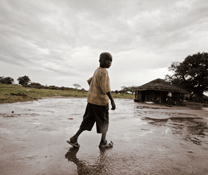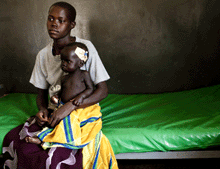 D.R.Congo
D.R.Congo Somalia
Somalia Sudan
Sudan Sri Lanka
Sri Lanka Pakistan
Pakistan Afghanistan
Afghanistan Yemen
Yemen Malnutrition
Malnutrition AIDS
AIDS Neglected Diseases
Neglected Diseases
Unrelenting violence stalks civilians throughout eastern D.R. Congo
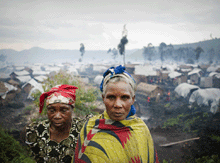
- Throughout 2009, the civilians suffered continuous violence from different armed groups in eastern Democratic Republic of Congo. Hundreds of people were killed, thousands of women, children, and, sometimes, men were raped and hundreds of thousands of people fled their homes. Guerilla warfare has replaced armed clashes in North Kivu where combatants spread terror by looting and burning houses in reprisals against the perceived support of communities to different factions.[more]
Somalis endure violence and lack of access to health care
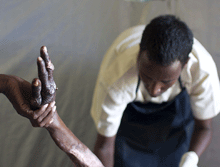
- In 2009, the Somali population continued to fall victim to indiscriminate violence and the consequences of the collapse of the public health system in the country. A severe drought plagued parts of the country, leaving thousands of children severely malnourished, while abductions and killings of international and Somali aid workers increased the already enormous gap between the needs of Somalis and the humanitarian response on the ground.[more]
Precarious situation for people in southern Sudan and Darfur
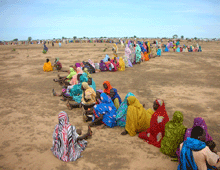
- Nearly five years after the Comprehensive Peace Agreement ended the civil war, medical needs throughout southern Sudan remain at urgent levels. Violent inter-communal clashes throughout the year have left hundreds dead and thousands displaced. Sporadic attacks on villages by the Ugandan rebel group, the Lord's Resistance Army (LRA), near the border of Democratic Republic of the Congo (DRC), caused thousands of Sudanese people to flee their homes and Congolese refugees to cross the border and seek refuge in Western Equatorial state.[more]
Thousands injured during the final stage of a decades long war in Sri Lanka
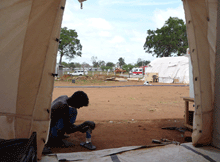
- As fighting raged earlier this year between the Sri Lankan military and the Liberation Tigers of Tamil Eelam in northeastern Sri Lanka, tens of thousands of civilians were trapped for months in a war zone with no aid and limited medical care. A few months before the final phase of the country's decades-long civil war, humanitarian aid agencies, including MSF, had to leave the areas most affected by the fighting, at the request of the government. Only the International Committee of Red Cross (ICRC) could continue some crucial medical assistance, evacuating some of the wounded to Ministry of Health hospitals.[more]
Civilians suffer from violence and neglect in Pakistan
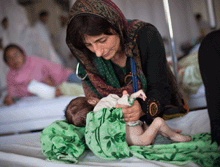
- Pakistan was convulsed by intense violence throughout 2009. Conflict between the Pakistani army and armed opposition groups in the North-West Frontier Province (NWFP) and in the Federally Administered Tribal Areas (FATA) displaced more than two million people, while numerous bombings in major Pakistani cities killed hundreds and injured thousands.[more]
Eroded humanitarian space leaves Afghans cut off from assistance
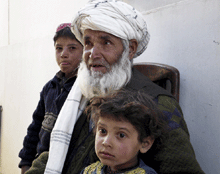
- As the war in Afghanistan escalated in 2009, Afghan civilians endured increasing levels of violence throughout the country. The insecurity has damaged an already beleaguered health care system, leaving only a few poorly functioning hospitals and clinics in provincial capitals. Afghans in need of any health care must now make an impossible choice: risk traveling hundreds of miles through a war zone to seek a medical care or allow a condition to worsen until it becomes life-threatening only to arrive at a health structure where services are greatly diminished.[more]
Civilians trapped in violent war in northern Yemen

- Followers of the Al Houti movement have fought five wars in Saada Governorate against the state since 2004. Before the most recent and intense "sixth war" began in August 2009, sporadic fighting in Saada in this spring injured dozens of civilians. MSF teams working in the hospital in the town of Razeh treated men, women, and children. The hospital itself and the MSF staff house were not immune from the violence. Fighting in the area restricted patient access to the hospital; slowing the facility's daily emergency, surgical and nutrition services.[more]
Woefully inadequate funding undermines gains in childhood malnutrition treatment
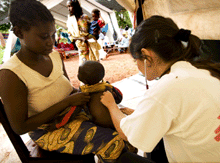
- An estimated 3.5 to 5 million children die each year from malnutrition-related causes—one death every six seconds. Yet childhood malnutrition is a medical condition that is easy to prevent and treat. Recent years have seen great improvements in our understanding of childhood malnutrition and an international consensus has emerged around the provision of therapeutic ready-to-use foods—rich in protein, vitamins, and minerals—to treat its most severe form in children under five. So why do 55 million children continue to suffer from this devastating condition?[more]
Lack of R&D and scale up of treatment plagues patients with neglected diseases
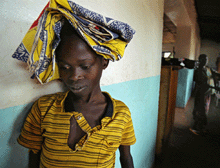
- More than 400 million people are at risk for the neglected tropical diseases (NTDs) visceral leishmaniasis (kala azar), sleeping sickness, Chagas disease, and Buruli ulcer. The first three are the deadliest of all the NTDs, and all four have been highlighted by the World Health Organization (WHO) as especially troublesome due to treatment and diagnostic tools that are old, ineffective, or worst, simply non-existent, and patient populations stuck in remote or insecure areas with little or no access to already limited available treatments.[more]



